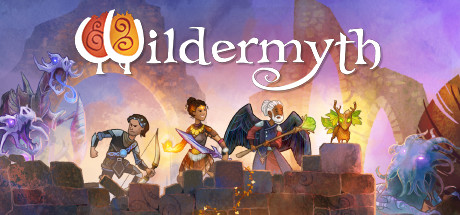Procedural excellence
Type: Singleplayer, Multiplayer
Genre: RPG, Strategy
Developer: Worldwalker Games LLC
Publisher: Worldwalker Games LLC
Release date: 15 Jun, 2021


Procedural generation, is there anything that’s better at scaring away a good chunk of the playerbase than those two words? Procedural generation has been a mainstay of the indie scene for about a decade now. Unlike most procedurally generated games Wildermyth is not a rougelike or roguelite though, but rather a story driven tactical RPG.
In Wildermyth you’re controlling an ever growing band of heroes that need to make the world safer from all kinds of evil and dangerous creatures. You’ll get to take care of your heroes and see them grow in both power and age, until they finally pass the mantle on to the next generation. Stories gets told through the games systems and your favourite heroes can get immortalized and return in future playthroughs.
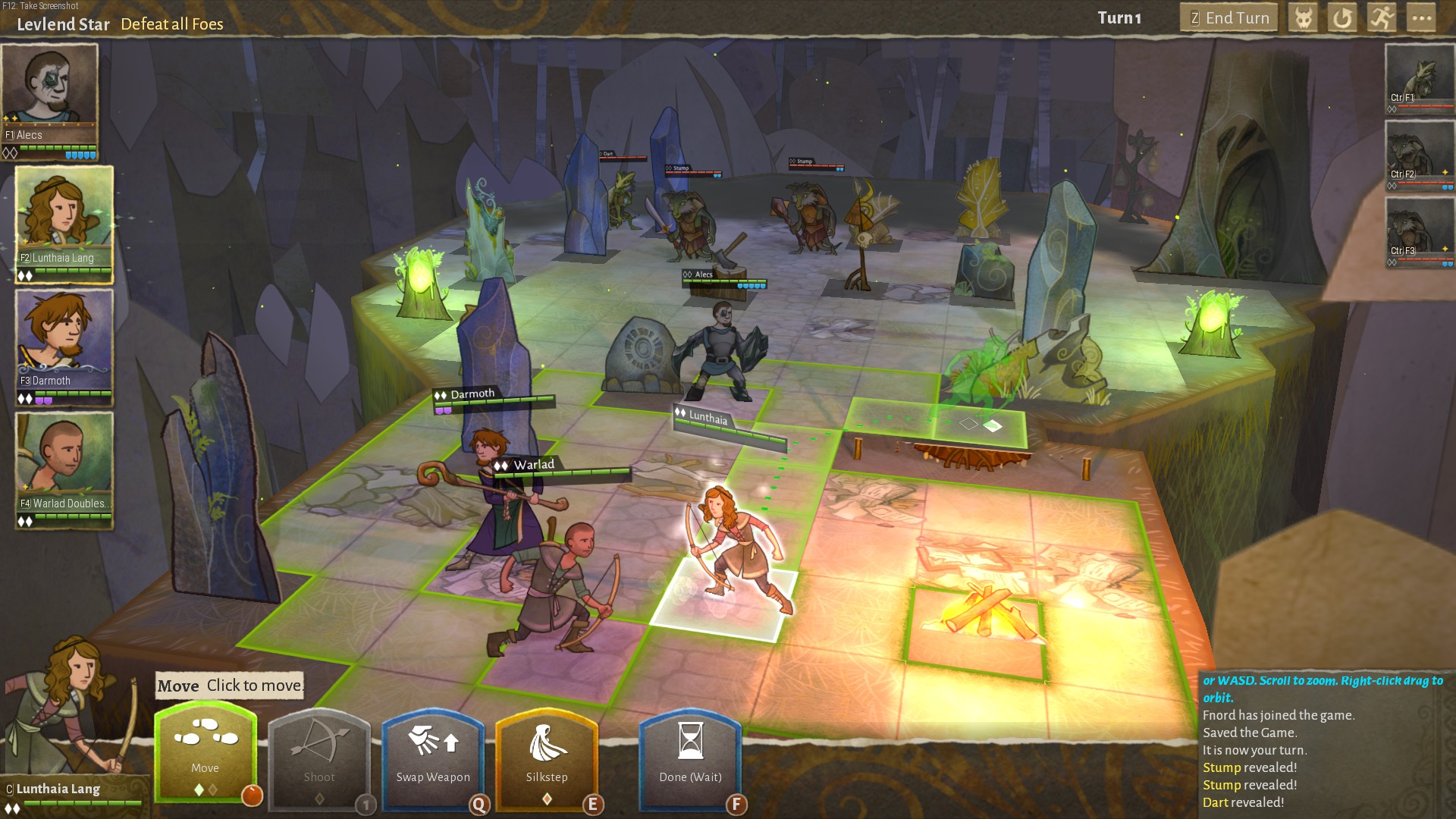
Story
Wildermyth does not just have one story, it has several. There are five different pre-written campaigns to chose from, each one focusing on a different threat to the lands, be it cultists from the deep, psychic bugs, terrible machine creatures and so on, as well as the option to play randomly generated campaigns. The writing in these pre-written campaigns is overall really good, and the plotlines are interesting enough that the game is worth playing just for them, but that’s still not where Wildermyth’s main narrative strength lies.
Characters in Wildermyth are randomly generated, although if you want to you can go in and manually edit them. They come with some different stats and personality quirks, though the later could have been expanded on a bit more and been made more obvious. As you explore the world of Wildermyth events will happen, presented in a comic panel form, with your characters in them. Most of the time you’ll get to make choices or two, some events build on past events and sometimes the stats of your characters will help determining the outcome. Characters will form relationships and rivalries with each other depending on the outcome of these events and maybe even gain some special abilities or pets.
These events are what makes the storytelling in Wildermyth work so well. They feel organic, are well written and it makes your heroes feel like yours and not just some random nobodies that the game has given you. It’s easy to grow attached to your heroes over time as they grow, and it’s always sad to see a beloved hero leave.
There’s of course a bit of smoke and mirror going on here. The events feel random, but the game draws from a pretty large pool of pre-set events. There’s a lot of events, but they will repeat at some points, even if there’s enough of them that there will almost always be at least a couple of hours between repeating events.
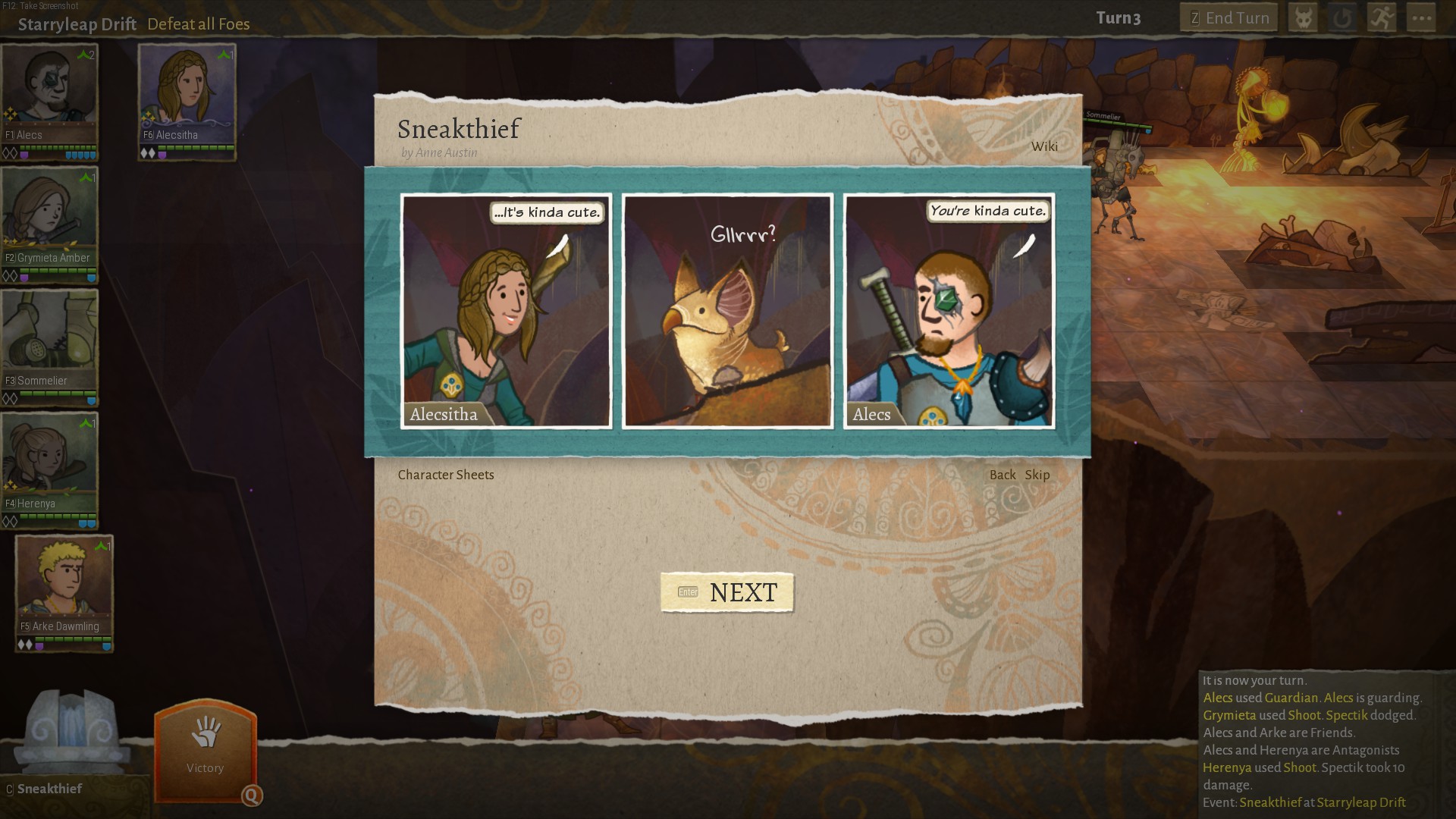
Presentation
Instead of a realistic look Wildermyth goes with a papercraft one and commits pretty hard to it. Every character, as well as all the objects in the world, look like they are paper cutouts. Some larger objects, like houses, look like they’re made out of folded paper, which allows them to occupy a 3-dimensional space, but everything else, be it creatures, characters or clutter objects, are flat. Enemies are a single flat piece while the heroes are modular and can have their arms, heads and torso tilted. Think paper puppets and you’ll have a good idea about what the characters look like.
Some of the character designs, particular for the larger monsters, can be rather impressive looking. A lot of imagination has gone into the monster design and it gives each type of monsters a distinct look and feel to them. There’s nothing that sticks out as not fitting though, the creatures all look like they belong in the same game. None of these are animated though, they’ll just jump around, and particle effects are used to convey different kinds of attacks and abilities.
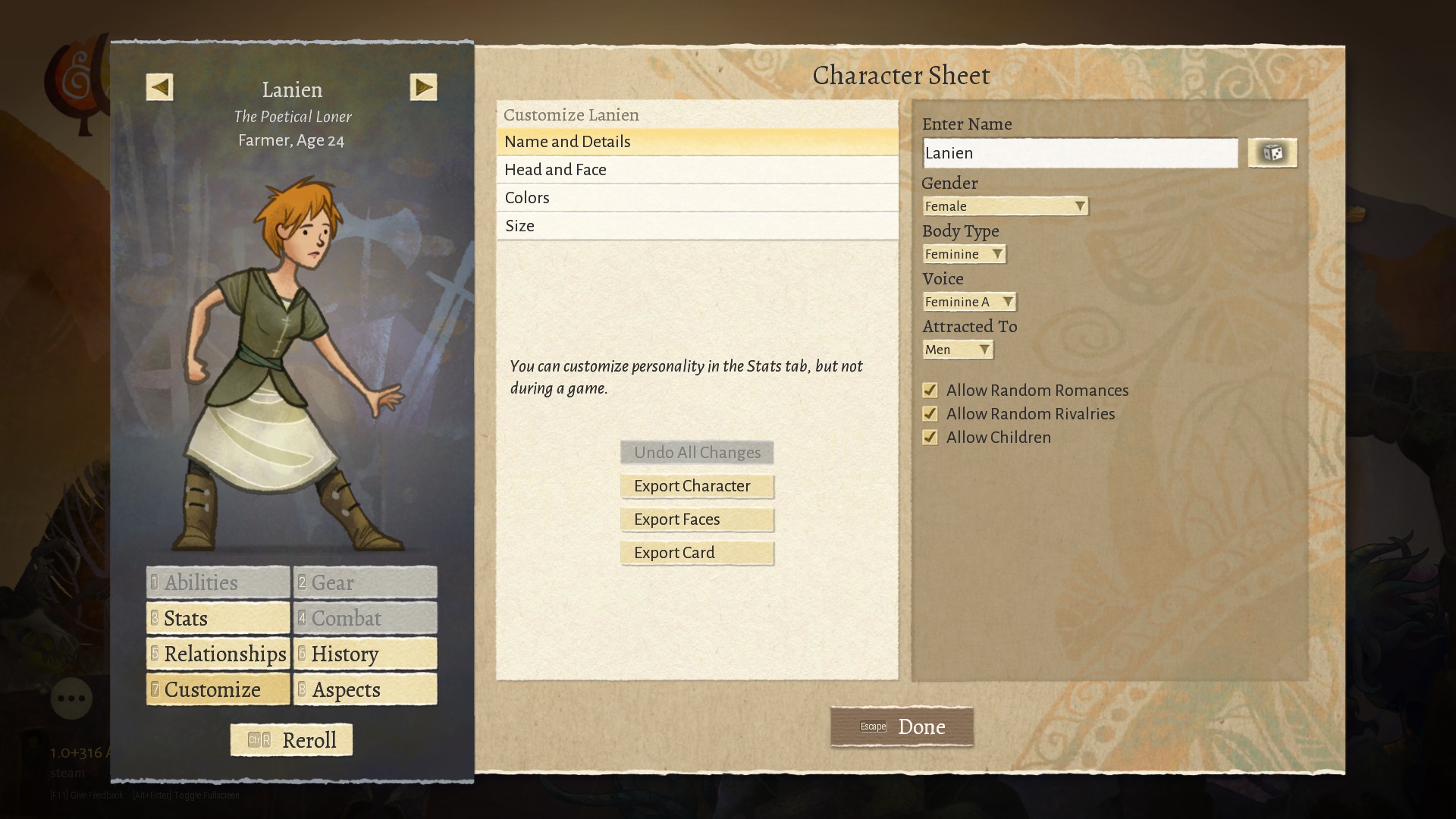
Story sequences, which happens before and after many battles, as well as when you do other things like recruiting new heroes are presented like comic panels. All characters, be it heroes or NPCs, are presented in the paper-puppet style. Characters can be very expressive in these panels, more so than you might expect for something that’s meant to look like paper puppets.
As for sound design, Wildermyth does sound pretty good. The music is pleasant and works well with the often slightly somber tone the game has. This is not a game with loud bombastic action music, but rather a lot of it sounds like it might have been played on string instruments such as violins and octobasses. The games sound effects also fit in with the games tone and they give some satisfying feedback when you’re attacking enemies.
There is something to be said about satisfying feedback. When characters gain experience, even when not leveling up, it’s done with a nice bit of both audio and visual flare, which really hits the pleasure center of the brain. The presentation here is really good, and small touches like this do make a big difference when actually playing the game.
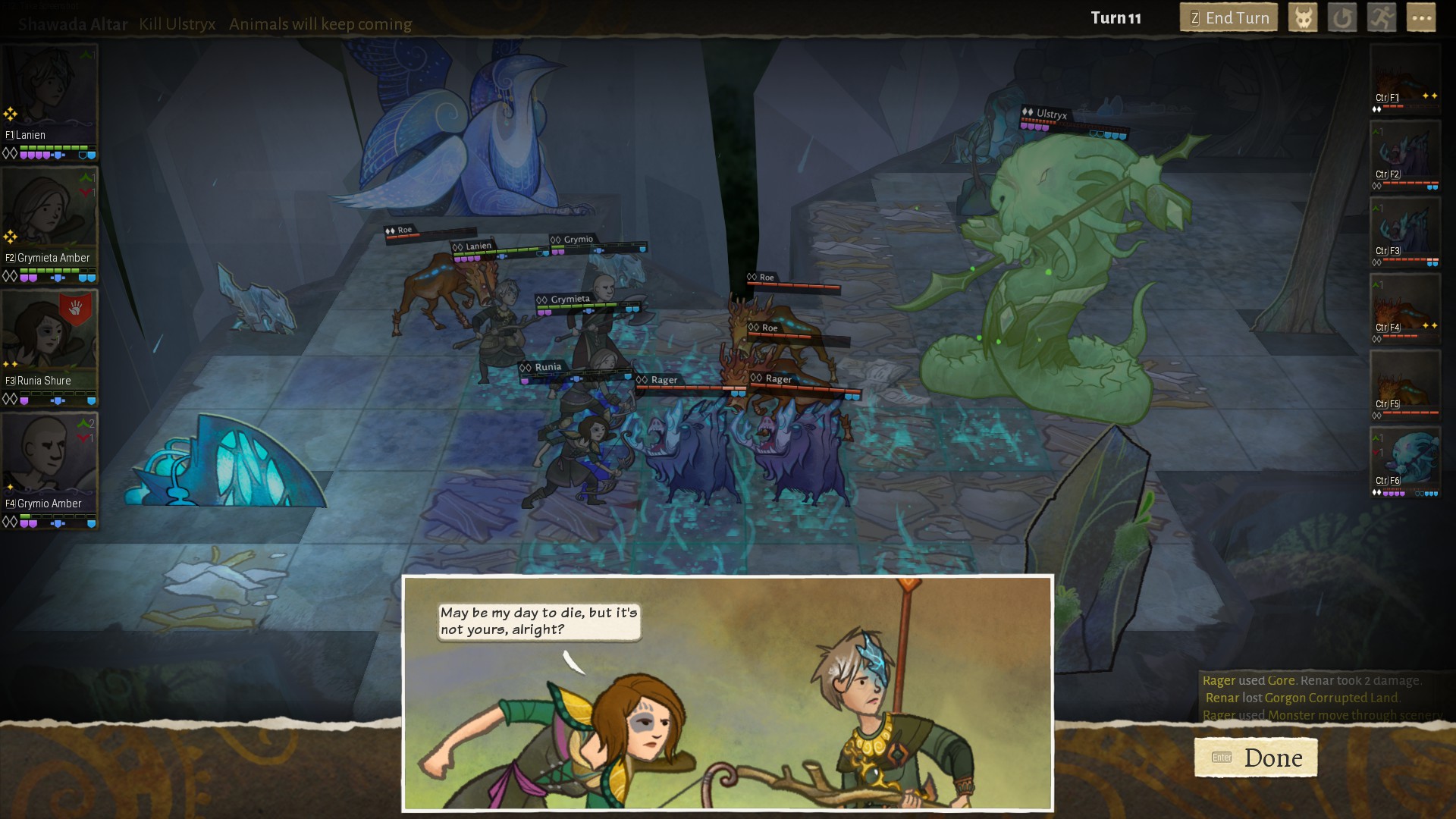
Gameplay
There’s a few novel ideas in Wildermyth that sets it apart from other games of its type, but enough familiar things for it to not be hard to get into.
At its core Wildermyth is a pretty straight forward SRPG. You’ve got a band of heroes that level up and grow more powerful over time, and that band of heroes grows in numbers as you progress through the game. Between fights you’ve got an overworld map which you can explore, region by region, and each region that you explore usually holds an event and/or a group of enemies that you need to fight.
Combat is also pretty straight forward. Movement is on a grid, and each character can do a certain number of actions, usually two plus a minor one. Attacking usually ends a characters turn unless they have an ability that lets them do something else after attacking and a character is allowed one free action and then either one attack and one move action or two move actions. Enemies follow the same rules as player characters.
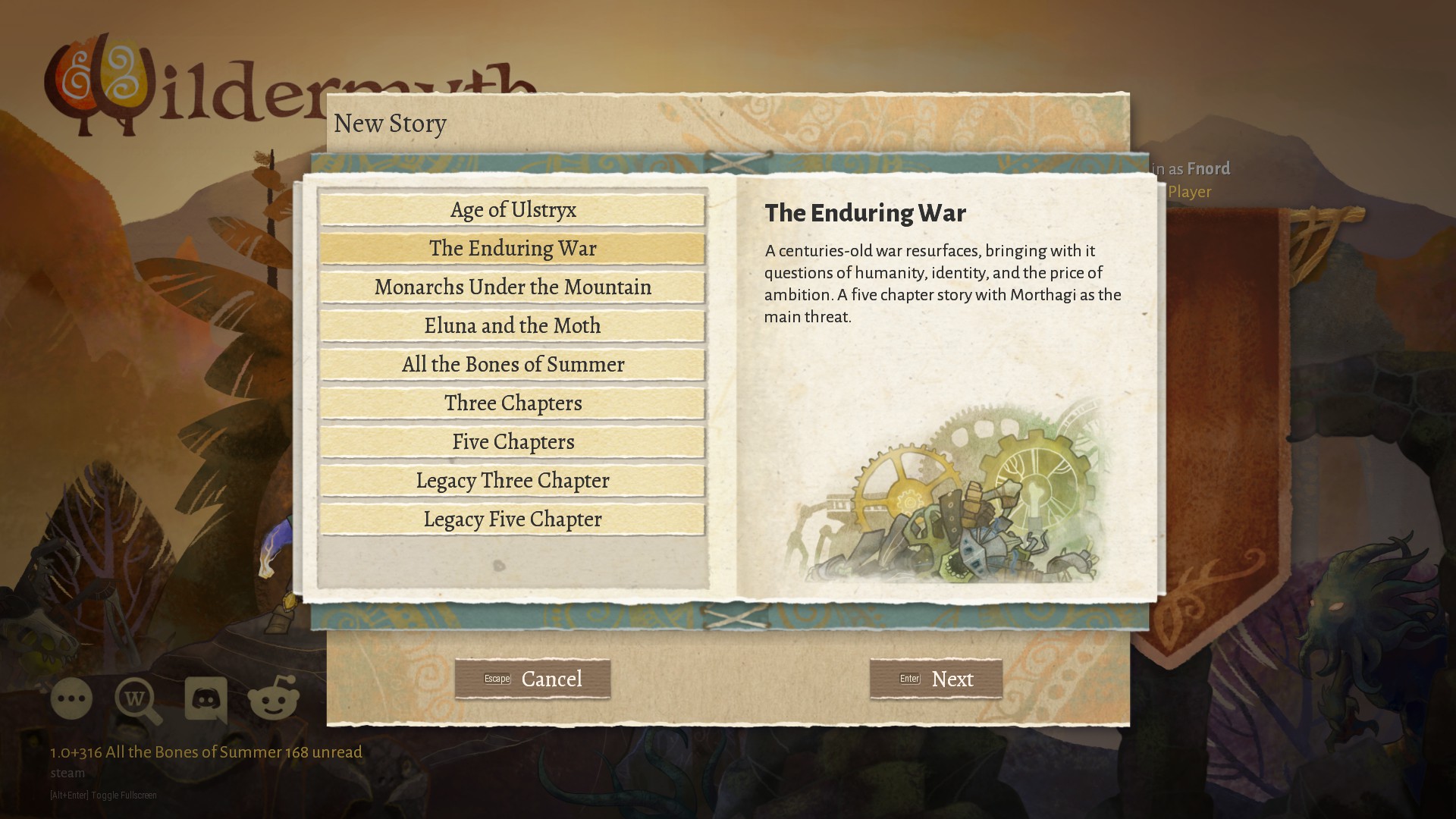
Most battlefields are not just flat open spaces, but they might be the inside of a fort with several rooms, a cave system or a village with houses you can enter. The battlefield itself does not have a massive effect on the game, beyond the fact that doors block line of sight and characters can hide behind furniture and such. Long open hallways also work well for archers, while melee characters will feel exposed. But overall the map itself won’t be forcing a lot of new tactical conundrums at you. There’s one exception here though, and that’s mages, who rely on the clutter objects of the battlefield to work.
The battles are usually not too difficult, but taking losses stings, as heroes can permanently die or get battle scars that will haunt them through the rest of the campaign. The game never feels punishing though, it’s a surprisingly lenient system and heroes are not too hard to come by. It is possible to enter a death spiral where one failure leads to another, but overall Wildermyth is good at avoiding it, and anyone who was put off by Xcom (which is still a great game) and its potential death spirals don’t need to worry so much about it in Wildermyth. It’s rare for a hero to die permanently, and raw recruits are still not useless.
Speaking of classes, there are three different ones which can be roughly translated to warrior, archer and mage. Warriors are your frontline fighters, they’ll equip heavy armour and like to bash people over the head in close combat. Archers work better at a range and tend to be more nimble than warriors, and then there are the mages who are the most unique class in the game. They don’t have an innate ability to cast dangerous spells, instead they’ll use objects around them as weapons. They can make a chair explode into tiny splinters, or a flame leap towards the enemy, they can make vines grasp at the feet of the enemy and shoot rocks that bounce between multiple targets. Different objects will confer different “spells” to the mage, and the spells are used from the object, and not the mage itself. Objects do take damaged from being used this way though, and friendly fire can be a concern at times. The objects that are scattered around the map can also be destroyed if someone attacks them, or they’re hit by some area of effect ability.
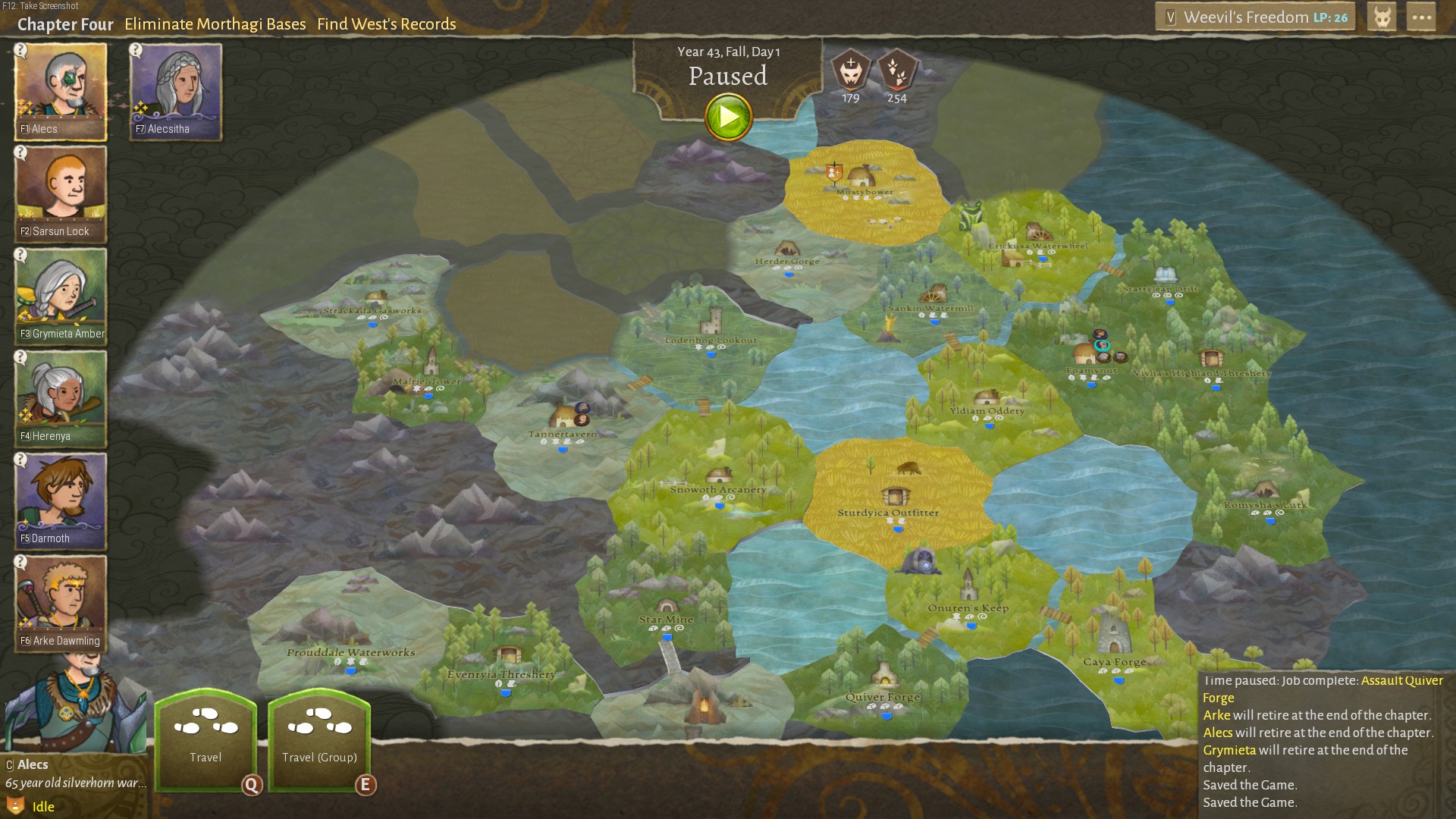
When a character levels up you’ll get to chose between several different abilities. These can either be passive, active or a mix of both, and this is something that can really start setting characters apart from each other, even within the same class. The selection seems to be random at every level up and some of the abilities can have a significant effect on how a character is played. A warrior might learn to leap long distances, allowing it to close the distance fast, or it might learn to hunker down and increase its defenses, at the cost of speed. A ranger might learn how to poison their weapon, or turn invisible and a mage might unlock more powerful spells from objects or damage any enemy that dares to get close. Leveling up characters feels good, and the varied skills really do help to make every new level feel exciting.
As if that’s not enough characters can be changed by events, giving them new abilities but at the same time hindering them in other ways. A character dipping their hand into a pool of electricity might be able to start shooting lightning bolts from their hands, but they can no longer hold a weapon in that hand, and another character might have their head turn into that of a crow, allowing them to peck at enemies. Changing different body parts have different effects, and some of them seem to be purely positive, while some can end up being more of a hindrance than a boon. Characters will usually start off with one of these changes and then they’ll spread through their bodies over time.
Each campaign you play is split up into chapters, and a campaign will either have three or five chapters. Every chapter will have an end goal, and once you reach it some time will pass and you’ll move on to the next chapter. During this time between chapters you can further upgrade the equipment of your heroes, but they’ll also age, and if they reach their retirement age they’ll leave the party, passing on some experience to another character. The more experience the character, the more experience it will pass on. It’s also during these segments that heroes will have any changes to their bodies, like turning into a crow, spread to new body parts.
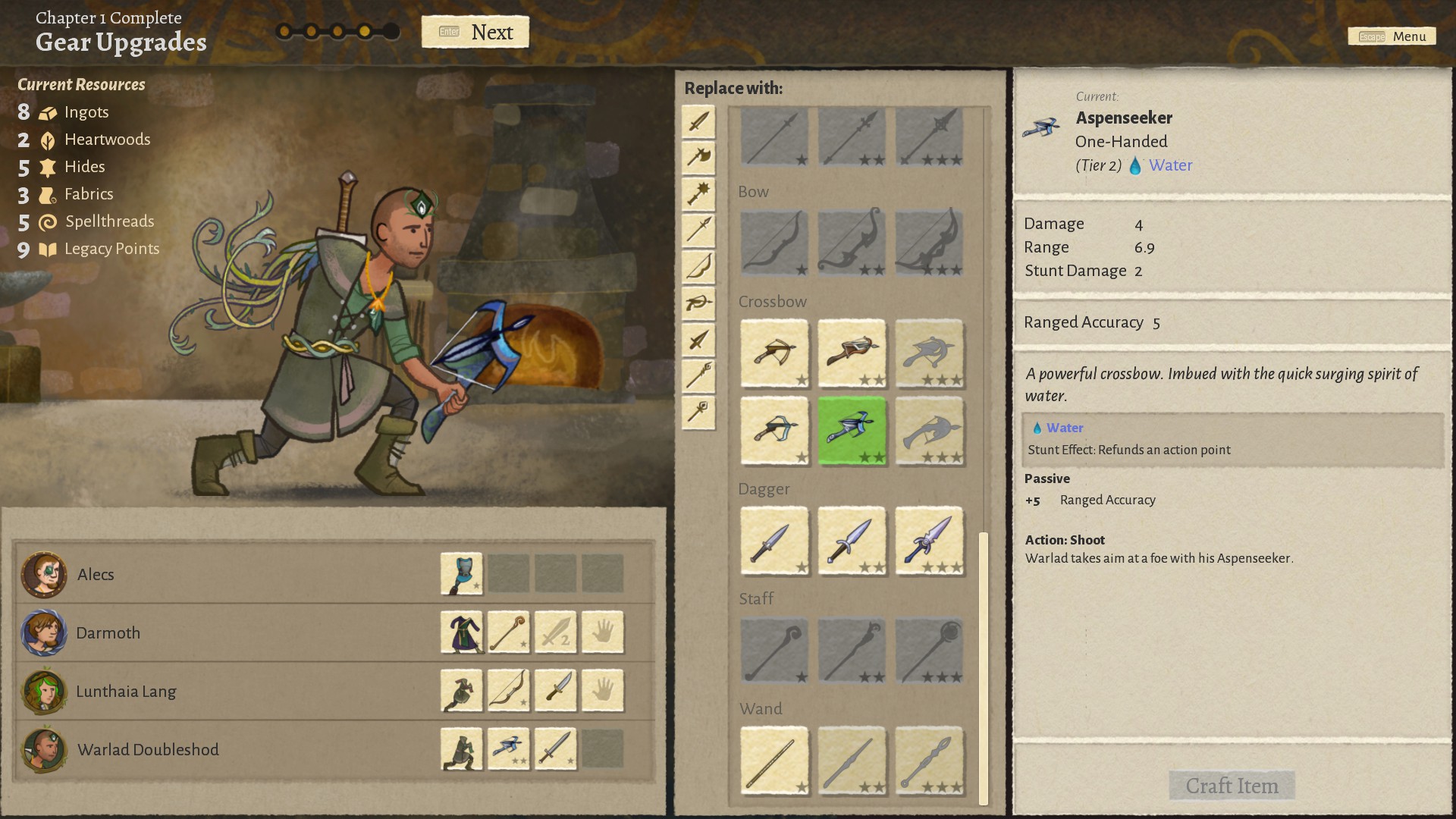
Seeing the characters grow and fighting nasty monsters in dank caves might be the most fun parts of the game, but the overworld map is where you need to think long term and make most of the decisions that will affect how well your campaign will go. The map will start small in the first chapter and then expand with ever new chapter you complete. Each map is split into regions, with most of them starting off unexplored. In order to explore a region you simply send a group of heroes to do so. If there are enemies there, you’ll then decide which heroes should go and fight them. There are other things you can do, like building outposts in regions you’ve cleared, which gives you some resources that can be used to make equipment, clear out passes which will allow you to travel across mountains, recruit new heroes and do certain events. Everything you do on the overworld takes time, which means that heroes age, and if you take too long enemies will grow stronger, or send out armies to ravage the lands. A year in Wildermyth is split into four seasons that are one month each, so time passes pretty fast.
Heroes don’t need to move in one big clump, you can send them out to do different things in different places, but sending out lone heroes into dangerous territories might not be so wise, and the more heroes you assign to a task the faster it will be completed. There’s an interesting balancing act to be found here with how much time you dedicate to things, how willing you are to split up your forces to speed things up and how many heroes you think are needed in any given battle.
Each category of enemies have their own set of creatures that tend to lean towards different strengths and weaknesses. The psychic bugs, known as the Thrixl for an example tend to favour magic, while the mutated animals, known as the gorgons often corrupt the very land they walk on, and spray corrupted blood when they die, which can hinder heroes and help other gorgon. That’s not to say that all traits are unique to any given category of enemies, just that they tend to favour different things.
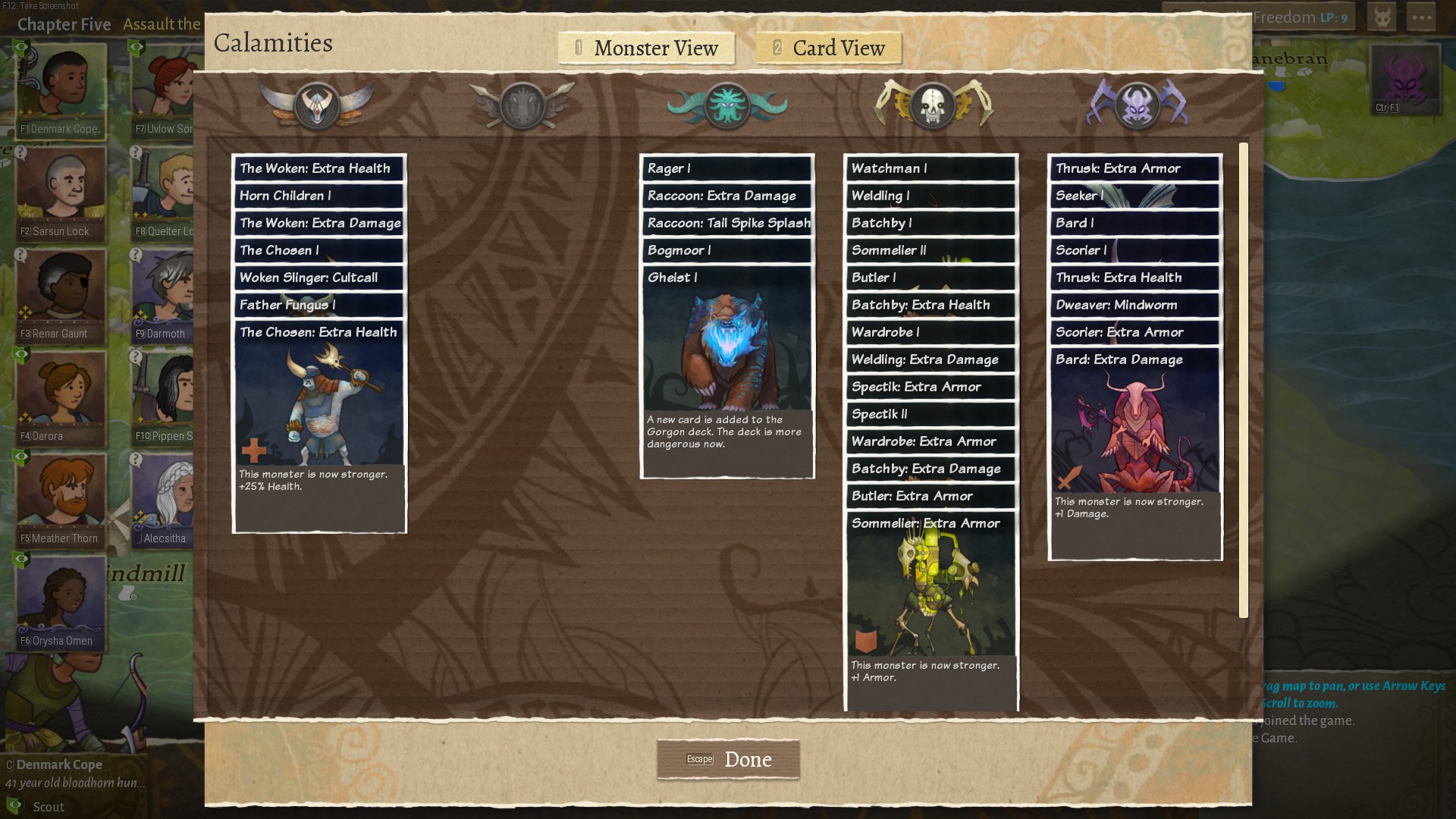
Enemies do grow more powerful over time. After every battle you’ve had with a category of enemies they’ll get a semi-random card, which makes them stronger in some way. It can be that a specific enemy type gains more health, or it might introduce more powerful kind of enemy. Some might get new abilities or just get better at resisting physical damage. At the end of every chapter a few of these cards will be removed, but the number of enemies you’ll face will go up, so the difficulty still goes up overall. It sure feels good to see a specific bothersome card that the enemy got get discarded though.
At the end of every campaign some of your heroes might become legacy heroes. These will be available in future campaigns, though they’ll join young and not at their full power. A legacy hero that you bring back multiple times will have the chance to grow stronger though, and can join further campaigns with more skills available. This can create some odd moments, like you bring in a father and son who’s now at the exact same age, but speak to each other like a father and son. But overall this system works really well.
Mod support
Wildermyth comes with pretty robust mod support. As the game has been in early access for a while now people have had time to make a fare few mods. The modding tools also have a fare bit of documentation and are pretty intuitive, so anyone who wants to create new things for the game should have no real issue doing so. There’s steam workshop integration and at the time of writing there’s already 85 mods, some small, like new hair, and some that changes up the game significantly.
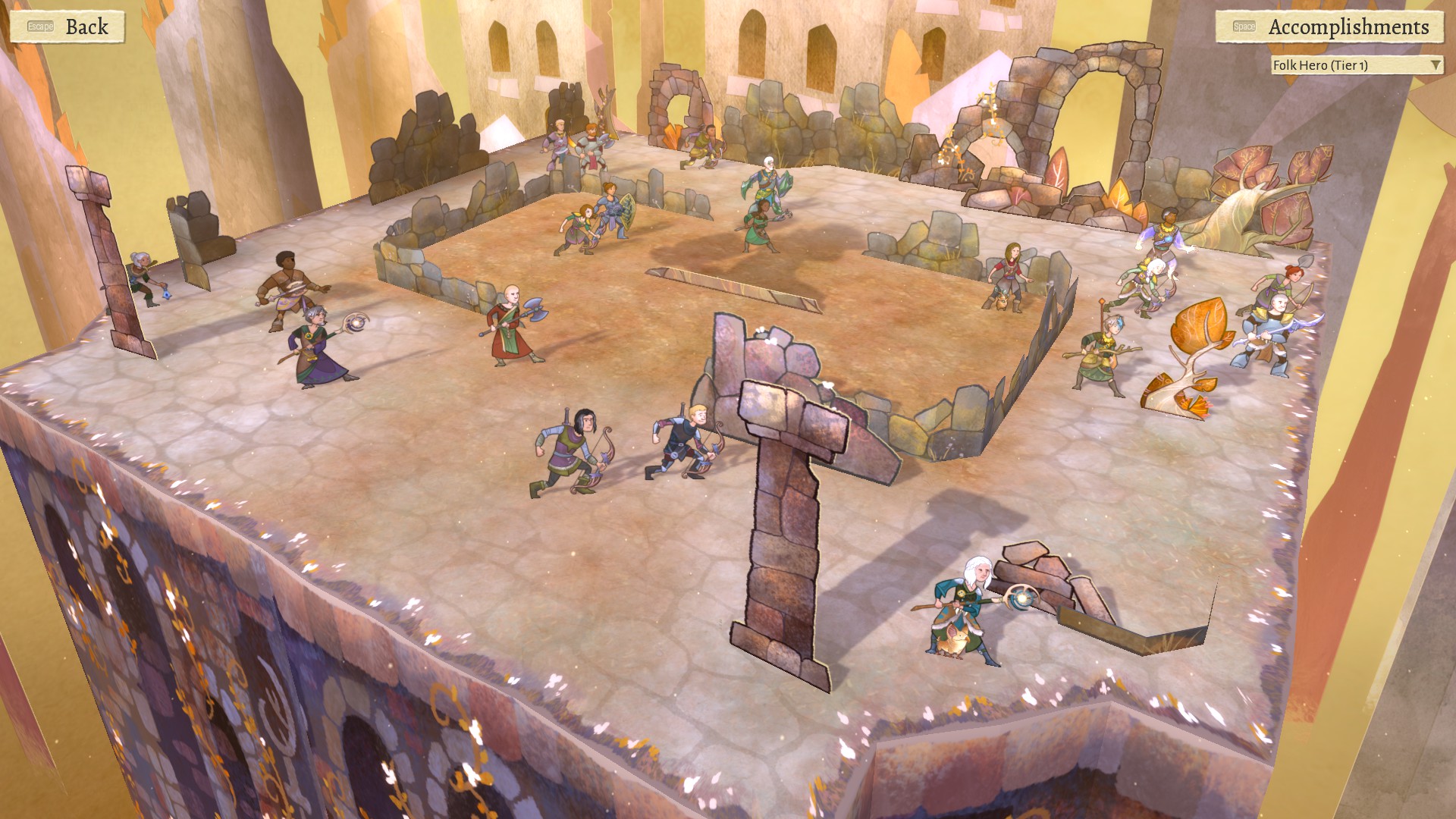
Closing thoughts
Wildermyth does a lot of things right, but chiefly among these things has to be just how satisfying it feels to play. There’s a real sense of progression when you clear out areas on the map, explore more of it, and watching your heroes grow. The game also does a really good at building stories and making you feel attached to your heroes. And it’s fun to see your beloved hero who somehow managed to get cursed by a tree and is now turning into one, show up again in new campaigns. It’s like seeing an old friend.
If there’s anything that Wildermyth does not do as well it’s that it might be lacking a bit in depth. It’s not a shallow game by any means, but there are far deeper SRPGs on the market. Still that does not stop the game from just being really fun to play. And Wildermyth is a game that I would imagine will have a lot of staying power for anyone who gets it. This is not a game you play through once and then consider yourself done with it, this is a game worth returning to, time and time again. The campaign structure also makes it easy to jump back into even if you’re feeling a bit rusty.
Anyone with even the slightest interest in SRPGs should give Wildermyth a shot. Games this good don’t come out often.

